Climate Disasters on the Planet from April 5 to April 11, 2024: Summary
Russia
The spring floods of 2024 in Russia turned into a true catastrophe. Despite preparations, no one expected floods of such scale.
As a result of the severe flooding,
39 Russian regions were affected.
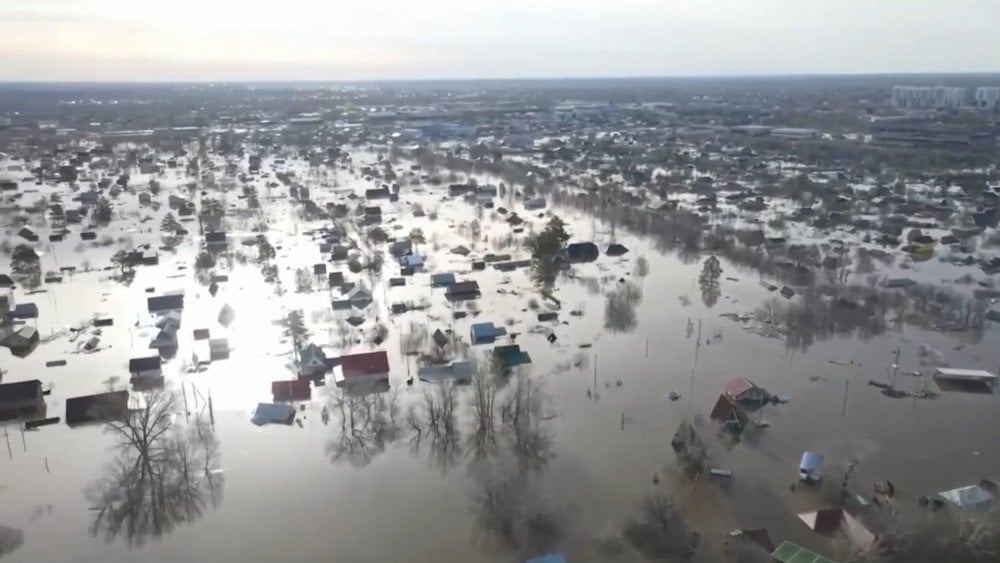
Massive floods in Russia
The most severe situation unfolded in the Orenburg Oblast.
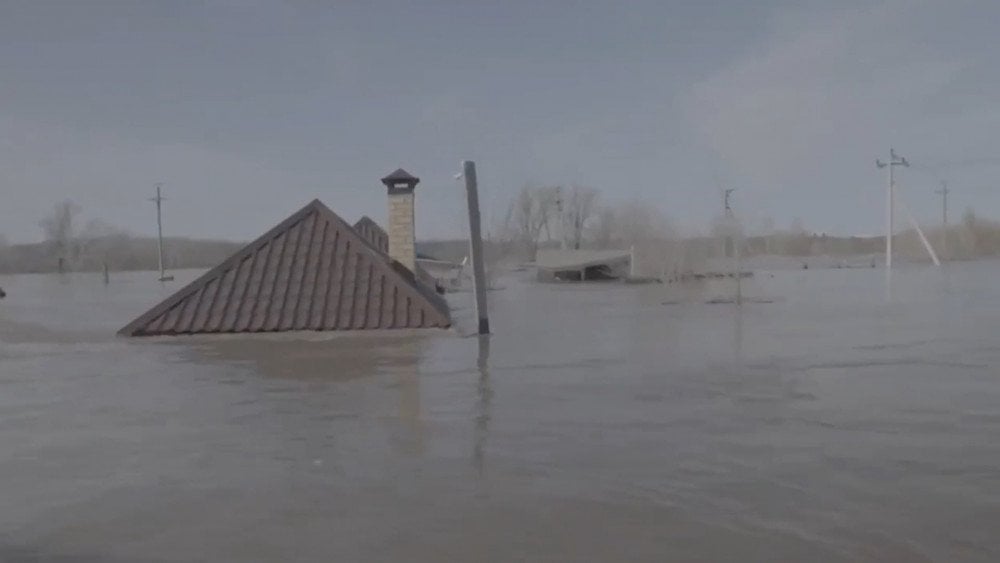
The strongest flood in the region in its entire history, Orenburg Oblast
On April 5th, the embankment built in 2010 to protect the city of Orsk from the overflow of the Ural River was breached. Unable to withstand the powerful force, the embankment gave way to water that flooded the streets of the city. Residents had to be evacuated urgently.
In the submerging city, due to the flood and the decrease in the quality of tap water, a shortage of drinking water quickly emerged. Bottled water in stores was sold out instantly. All students were shifted to remote learning, and the oil refinery plant temporarily ceased operations.
On April 7th, a federal-level state of emergency was declared in the Orenburg region. Such a flood had never been experienced in the region's history. On April 11th, the water level in the Ural River in Orenburg reached a historic record of 11 meters (36 ft.) and continues to rise. Parts of the half-million city and other settlements in the region were submerged.
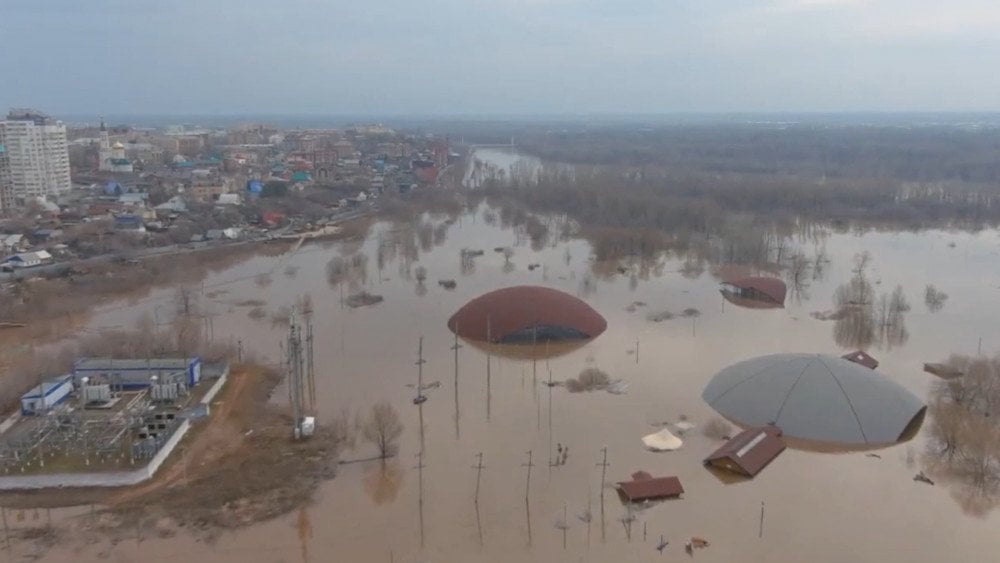
Historic flooding in the Orenburg Oblast
Some people not only lost their homes but also their businesses — shops, farms, and stables were submerged.
Rescue forces and resources from across the country began to arrive in the region to help Orenburg residents.
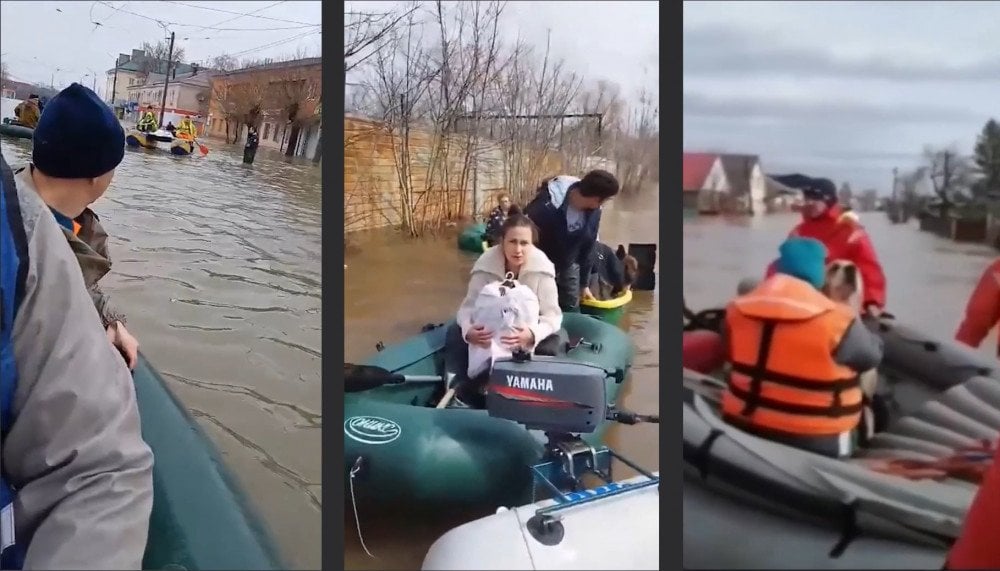
Evacuation of local residents from the flood zone, Orenburg Oblast
Today, over 26,000 houses and plots of land remain flooded, and 35 bridges are closed to traffic. People are coming together to help each other evacuate belongings, children, and animals.
The governor of the region remarked, “It is evident that the 2024 flood is the most extensive in the history of observations in the Orenburg region.”
A state of emergency was also declared in the Kurgan and Tyumen regions.
In the Kurgan region, over 500 residential houses and plots of land were flooded as a result of the flood.

Floods in the Kurgan region
The water level in the Tobol River near the city of Kurgan rose by 65 cm (25.6 in.) and reached 556 cm (218.9 in.). Over 1,000 local residents were evacuated.
The wave of floods also reached the Kuzbass region. Blockages formed on the rivers during the ice drift, causing water to overflow into nearby settlements. The most difficult situation occurred in the southern part of the Kemerovo region, in the village of Ust-Kabyrza, where the river Mrassu burst its banks. The water level exceeded the critical mark by almost a meter (3.2 ft.). Powerful streams mixed with blocks of ice literally swept away small structures, and local residents had to await rescue on the roofs of their homes.
Residents of Ust-Kabyrza and nearby villages claim that such floods have never occurred here before.
Kazakhstan
Kazakhstan faced the most extensive spring floods in 80 years, that affected
12 out of 17 regions of the country.

Massive spring flash floods in Kazakhstan
As of April 12th, 99,869 people have already been evacuated, including 36,591 children. Meltwater flooded roads, leaving 66 settlements cut off from the outside world. Thousands of houses are flooded.
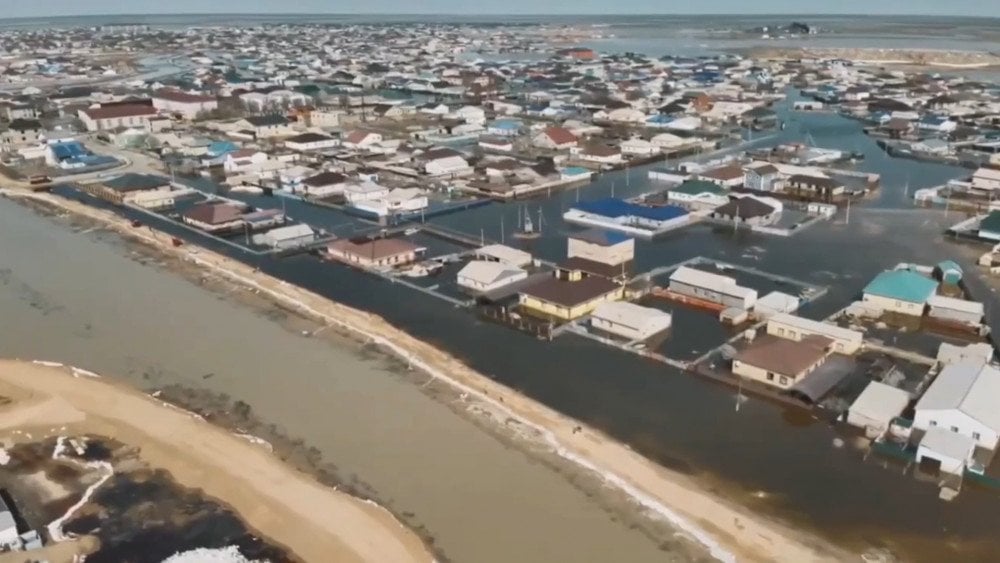
Flooded settlements in Kazakhstan
More than 8,000 animals have perished due to the disaster. The water not only submerged residential areas but also inundated 14 burial sites and 8 livestock burial sites for Siberian plague in the West Kazakhstan region.
The Vice Minister of Emergency Situations of Kazakhstan stated, “Regarding the five regions affected by flooding, here, if you notice, the water is coming not from the rivers, but from the steppes, meaning, honestly speaking, from where we didn't expect water... All previous flood situations were related to river regulation, meaning, to places where there are reservoirs, engineering structures… This is climate. If you remember, the weather was warm, and before the onset of frost in early winter, it was warm everywhere, and it rained everywhere, and as a result, the ground froze much deeper — and the water, the snow that is now melting in the steppe, it just flows like on an oilcloth.”
The situation was exacerbated by heavy rains, and the freezing of the ground up to 1 meter deep led to the meltwater not seeping into the ground but rushing into settlements.
Bangladesh
On April 7th, a powerful storm struck Bangladesh. The most serious damage was inflicted on the districts of Pirojpur, Patuakhali, Jhalokati, Bhola, Khulna, Netrokona, and Bagerhat. In Bhola district alone, over 7,000 people were affected. Dozens of people were injured, with some reported missing.
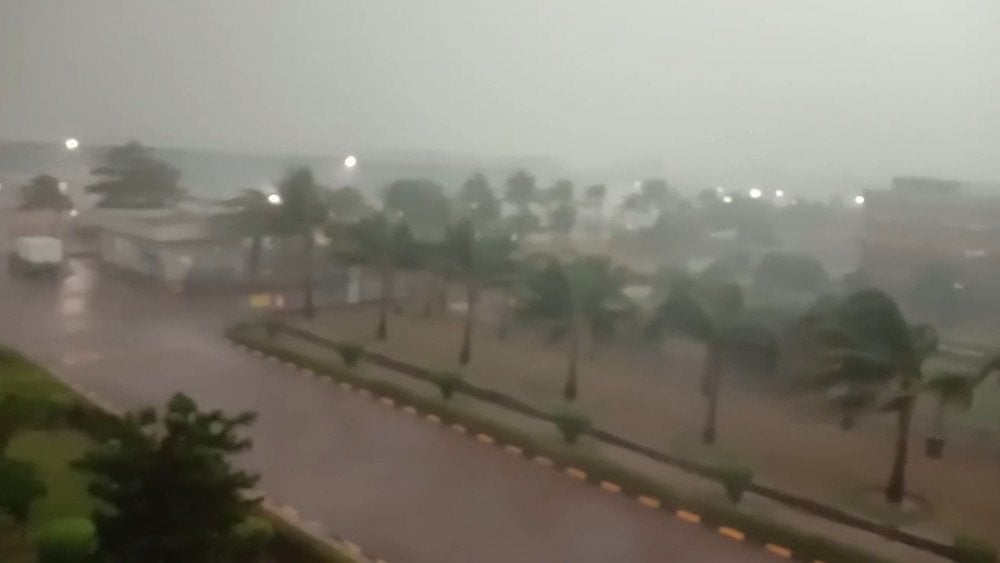
Strongest Storm in Bangladesh
The Department of Disaster Management reported 13 fatalities. The sudden storm was not forecasted in advance and led to numerous deaths from lightning strikes among farmers who continued to work outdoors.
People also perished due to falling trees, collapsing houses, and hurricane-force winds.
In some areas, the storm raged for just 15 minutes, but it was enough to sow complete chaos. Over 750 houses were damaged or destroyed.
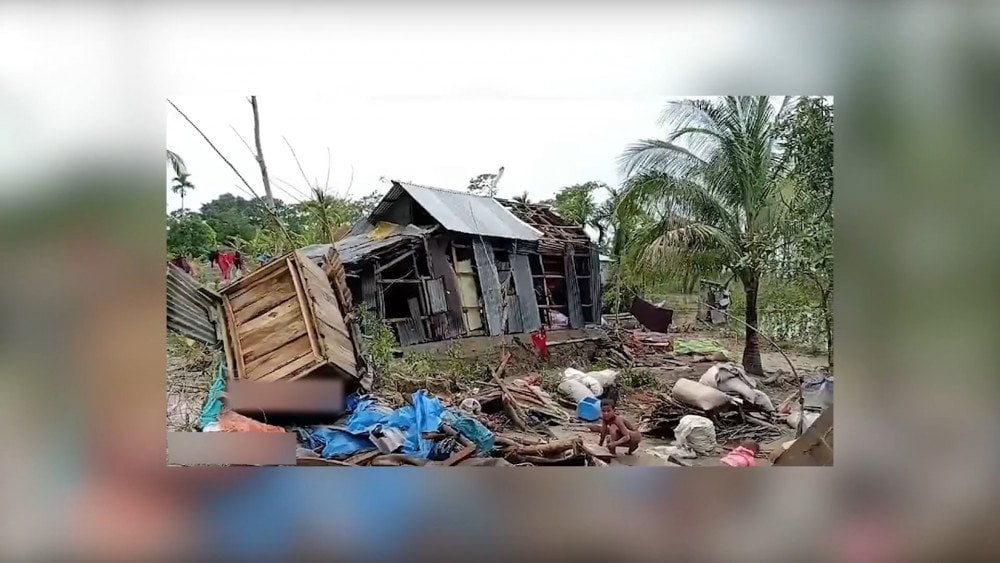
Damage from hurricane-force winds in Bangladesh
Hundreds of kilometers of power lines were damaged. Many areas were left without electricity.
Crops also suffered. Hail damaged various crops, including watermelons.
Near Manpura Island, a trawler carrying 6 fishermen capsized due to strong winds. Fortunately, the entire crew was rescued. It is worth noting that before the deadly storm in Bangladesh, temperatures had risen to abnormal levels for several days — exceeding 37°C (98.6°F) in some areas.
Africa
South Africa
On April 6th and 7th, strong winds, storms, and heavy rains battered the coastal region of the South African province of Western Cape, which includes Cape Town.
The wind caused numerous problems, including tree falls, power outages, and roof damage.
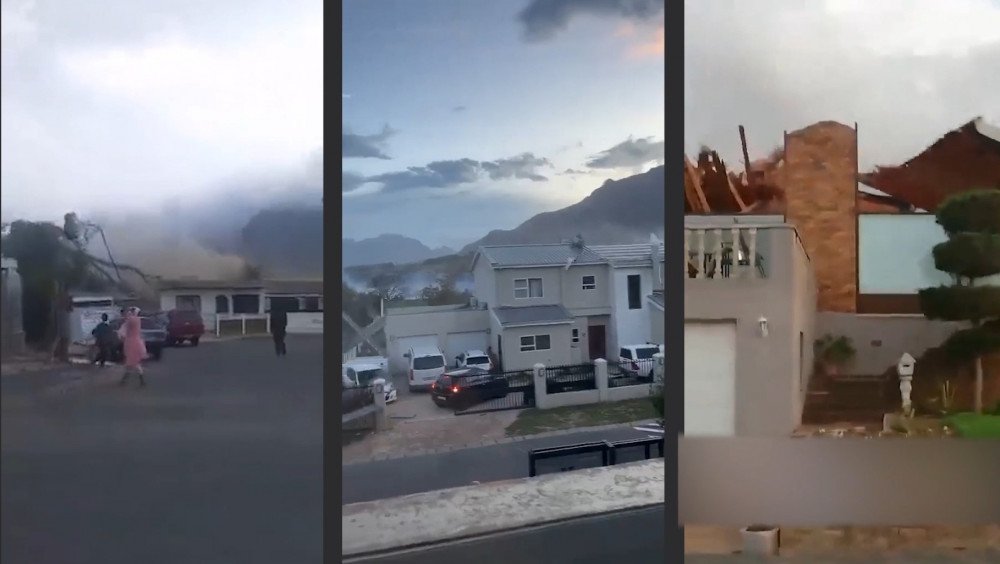
Aftermath of Gusty Winds and Heavy Rains in the Western Cape Province, South Africa
The severe weather led to the closure of highways, and there were reports of road and infrastructure destruction. Strong winds damaged at least 26 schools across the province.
One person died as a result of extreme weather.
Shocking footage captured by eyewitnesses showed gusty winds blowing trucks off bridges, flipping them, and tossing them across roads. Wind speeds reached 44 m/s (98.4 mph).

Gusty wind blows cars off bridge, Western Cape Province, South Africa
The strong wind caused several forest fires. In the Cape Town suburb, 8 houses were burned down. In the town of Stellenbosch, around 300 houses were destroyed by fire and strong winds.

Wildfires in the Cape Town suburb, South Africa
It was only thanks to the heavy rains that the further spread of the fire was contained.
North America
USA
On April 5th at 10:23 AM ET, a 4.8-magnitude earthquake struck in central New Jersey at a depth of 4.7 km (2.9 miles). The quake's epicenter was in Tewksbury, about 40 miles (64 kilometers) west of New York City.
This is one of the largest earthquakes on the East Coast of the USA in the last 100 years.

M4.8 earthquake in New Jersey, USA
It was felt in major cities such as New York and Washington. In New York, the Statue of Liberty was seen swaying during the initial earthquake, while workers and residents across the city's five boroughs reported violent rumbling.
Air traffic was halted to inspect the runways.
9 km from the epicenter, in the city of Lebanon, New Jersey, frightened residents rushed out onto the streets due to the strong shaking. “We're not used to having earthquakes in New Jersey, let alone a big one like this; we were all scared,” shared one local resident.
Interestingly, New York City residents received the first notification of the earthquake from city authorities only 26 minutes after the event. By that time, social media had been already flooded with photos and videos of the seismic event.
According to a representative of the U.S. Geological Survey, this earthquake may have happened on an old fault line that formed millions of years ago and became “reactivated”. Since there are no known active faults in the area, where strong seismic events usually occur.
A deadly storm system over 1,000 km wide hit the southern USA.
In several counties in Mississippi, about 32,000 power outages occurred, and at least 72 homes were damaged.
Downed trees have resulted in multiple road closures in Hinds and Yazoo County. One person died, and one was injured in Grenada County.
On April 10th, the city of New Orleans, Louisiana, was flooded in just a few hours. The rain was so heavy that half of the month's worth of rain — 50.8 mm — fell in just an hour. This exceeded the capacity of the municipal services to drain water from the city.

Aftermath of abnormal rainfall in New Orleans, USA
The 6.24 inches of rain fell at New Orleans Int'l Airport in just 7 hours. Some flights were delayed, while bus and tram services were suspended.
Numerous roads and underpassages in and around the city were underwater and impassable. Most of the city's schools and administrative buildings closed due to severe weather conditions.
The National Weather Service declared this event an emergency flood.
In addition to the torrential rains, several tornadoes swept across the state, with destructive wind gusts of about 35 m/s.
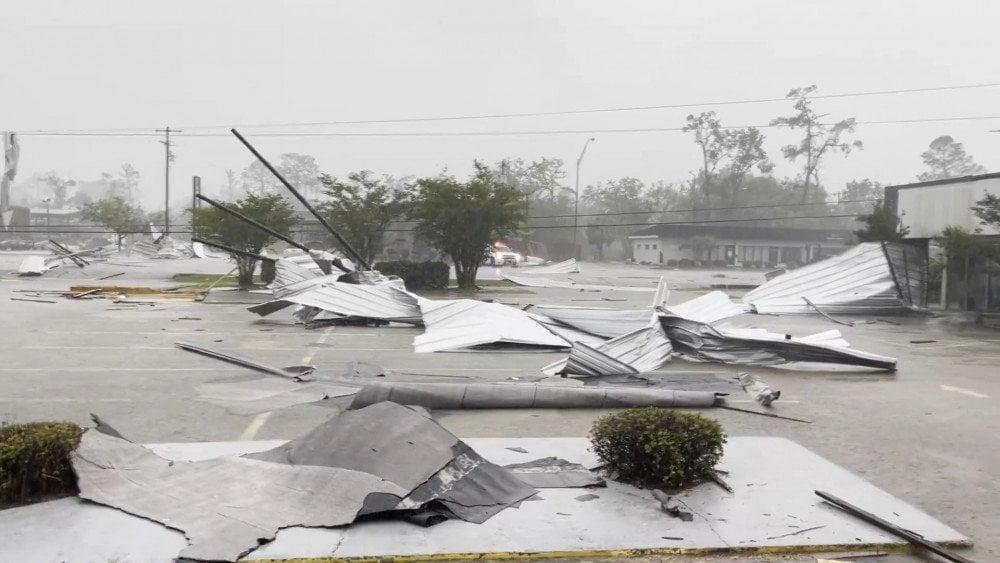
Aftermath of the storm and tornado in Louisiana, USA
In St. Landry Parish, a tree fell on a car, injuring 4 people. One injury was reported as critical and the victim was being flown to a hospital.
In Lake Charles, an EF-2 tornado with 115-mph winds traveled almost a mile, ripping off roofs and tearing down power lines.
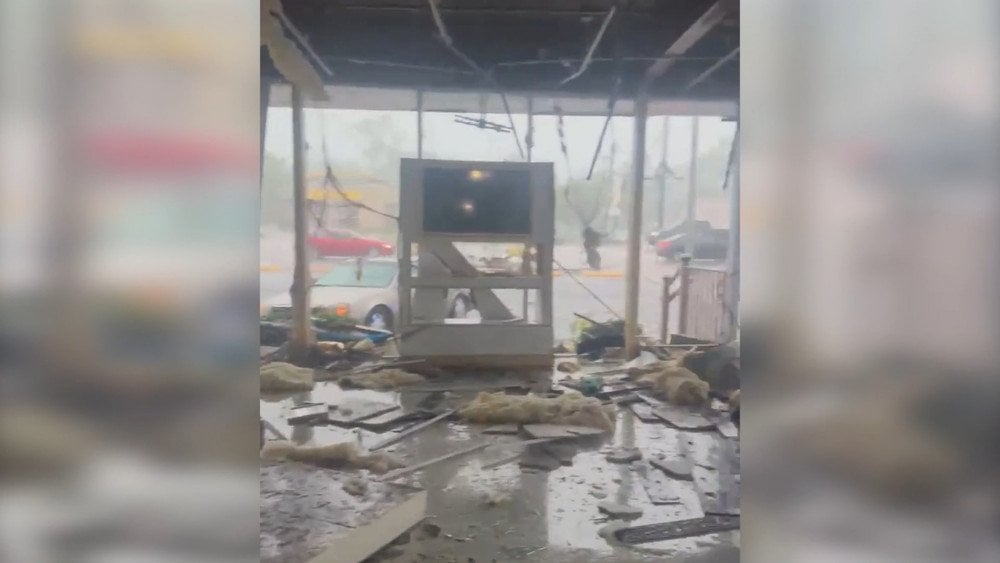
Aftermath of the storm and tornado in Louisiana, USA
In the city of Slidell, St. Tammany Parish, and its surrounding areas, an EF-1 tornado damaged hundreds of homes and businesses, resulting in over 100,000 power outages.
Emergency services had to rescue people trapped in one severely damaged residential home. About 50 people were injured, with one person hospitalized with a head injury.
Extreme flooding also hit Texas.
The National Weather Service reported that in 36 hours, some parts of eastern Texas received 304.8 mm of rain.
In the cities of Kirbyville and Port Arthur, torrential rain caused a rapid rise in water levels in local water bodies, leading to road, home, and business flooding, as well as school closures.
In Kirbyville, firefighters rescued a young man from an almost submerged car.
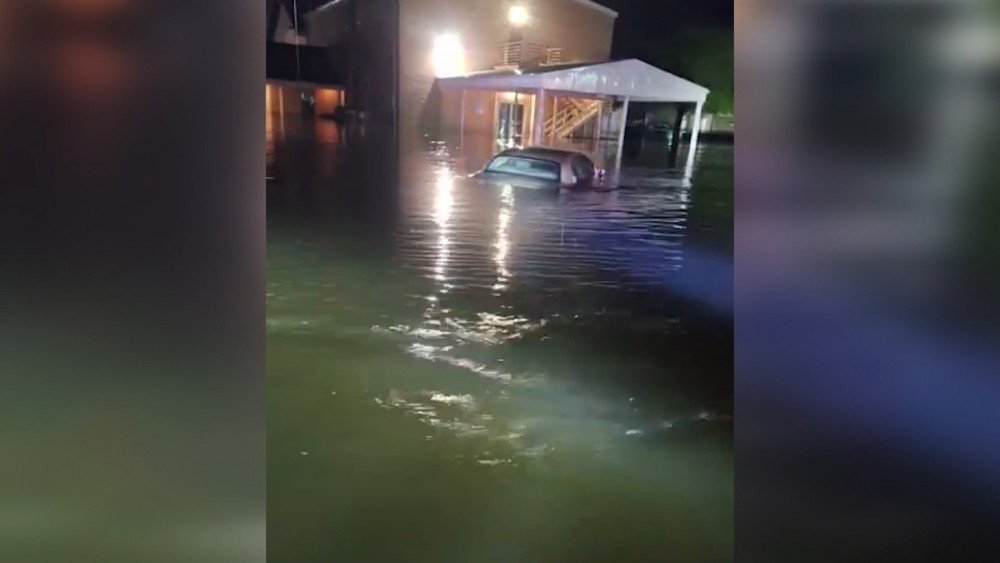
Flooding in the city of Kirbyville, Texas, USA
Not only people but also animals had to be rescued. On a farm, a man saved horses that were neck-deep in water in a flooded barn.
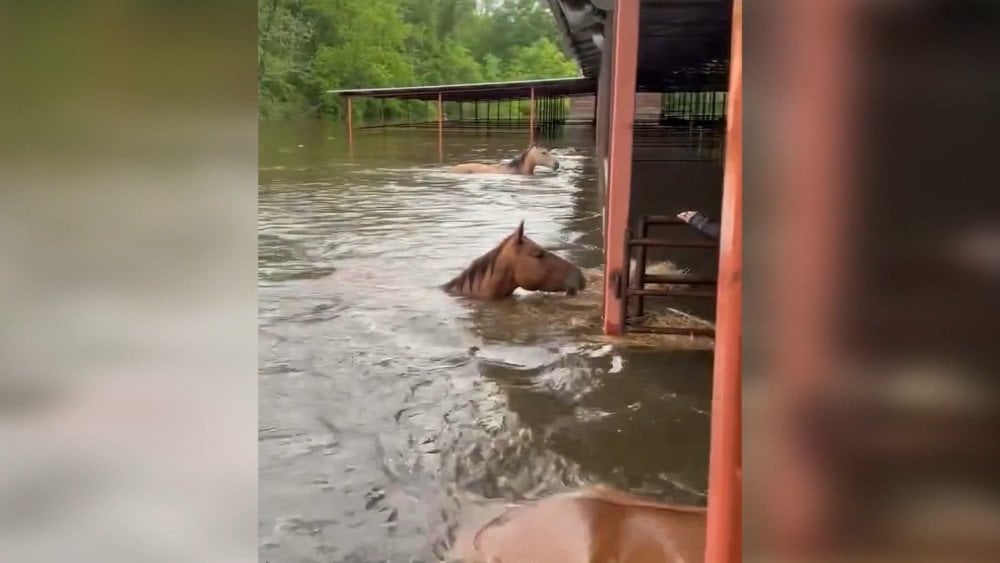
Flooded horse farm in the state of Texas, USA
Tornadoes also wreaked havoc in Texas.
An EF-1 tornado with a maximum wind speed of 40 m/s caused damage in the city of Katy, traveling about 3 km and destroying several buildings in its path.
Another tornado touched down in Chunchula, Alabama, damaging a house.
The tornado had a maximum
wind speed of about 44 m/s.
Meteorologists classified this outbreak of severe weather as a serial derecho — a meteorological phenomenon characterized by a long and intense line of thunderstorms extending over 380 km, with wind gusts exceeding 25 m/s.
Australia
Abnormal rains hit the east coast of Australia on April 5th and 6th. Particularly affected were the settlements along the Hawkesbury River.
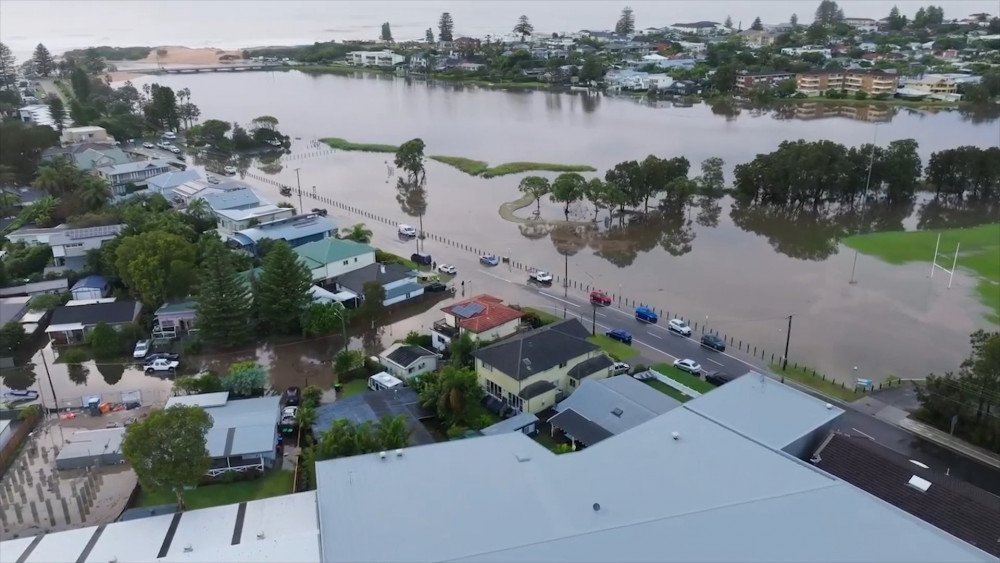
Floods in regions on the east coast of Australia
In some regions,
the amount of rainfall exceeded the average monthly norm by more than 3.5 times in just 2 days.
For example, in the city of North Richmond, 197 mm of rain fell, while the average for the month is 55.3 mm.
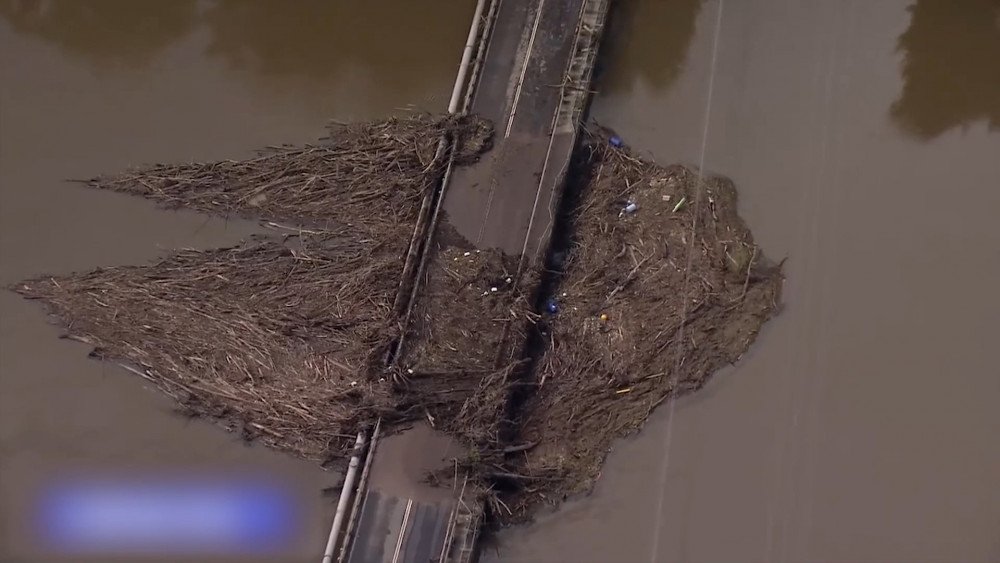
Aftermath of record rainfall in North Richmond, Australia
In just 24 hours, the water level in the Hawkesbury River rose by 8.5 meters and flooded adjacent areas.
In the city of Wollongong, a young couple narrowly escaped when the house they were in was swept away by water and crashed into a bridge.
And in Dapto, to avoid drowning in floodwaters, two women had to cling to trees, waiting for rescuers to arrive. Emergency services managed to rescue a woman when her car began to sink in the turbulent water flow.
In Sydney itself, the rain was the heaviest in over 30 years. In two days, 287 mm of rain fell here, compared to the monthly average of 121.5 mm. Hundreds of residents in the northwest of the capital were ordered to evacuate from their homes.
During the floods throughout New South Wales state, 150 rescue operations were carried out, 88 of which were in Sydney.
Heavy rain caused a massive landslide on the only road leading into the Megalong Valley and beyond.
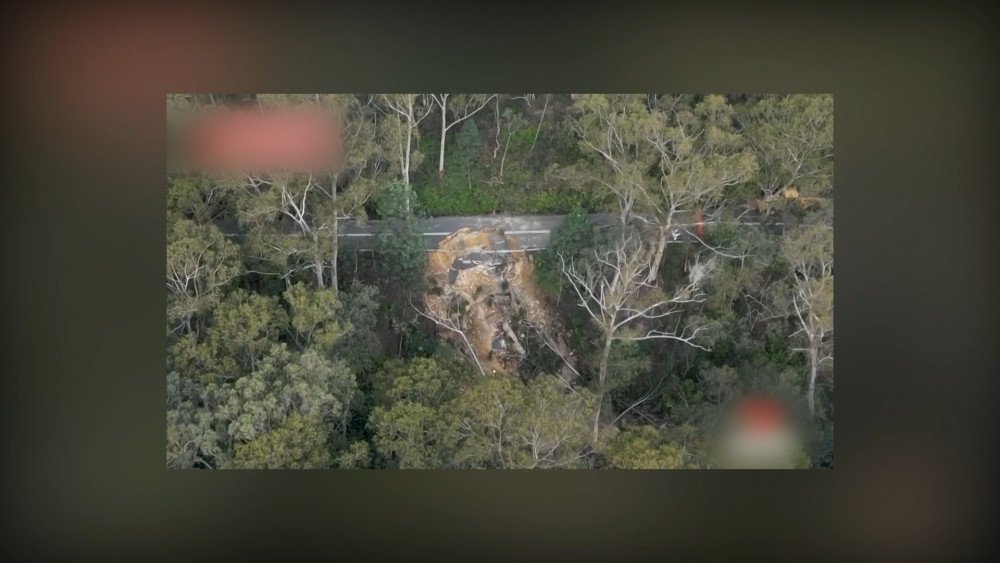
Massive landslide in the vicinity of Megalong Valley, Australia
On April 13th, more than 200 residents of the valley were isolated. Food, fuel, and essential items had to be dropped to the affected people by helicopter.
Europe
In just 11 days of April 2024, heat records were broken in 134 countries around the world.
Never before in climate history has anything like this happened!

Record cold in Scandinavian countries
During the same period, in Scandinavia,
record April colds were recorded:
in Rovaniemi, Finland —
-19.2°C
in Bardufoss, Norway —
-26.0°C.
But in most European countries, it was hotter than during an average midsummer period.
On April 6th, in the municipality of Olsbach, Germany, the temperature jumped above +30°C – the earliest +30°C ever recorded.
On the same day in Basel, Switzerland, a record +28.8°C was recorded.
In the European part of Russia, about 100 heat records were broken in 3 days.
The sudden surge of abnormal warmth in the European region is partially related to the Storm Kathleen, which brought warm air from Africa and carried it across the Atlantic to Europe.
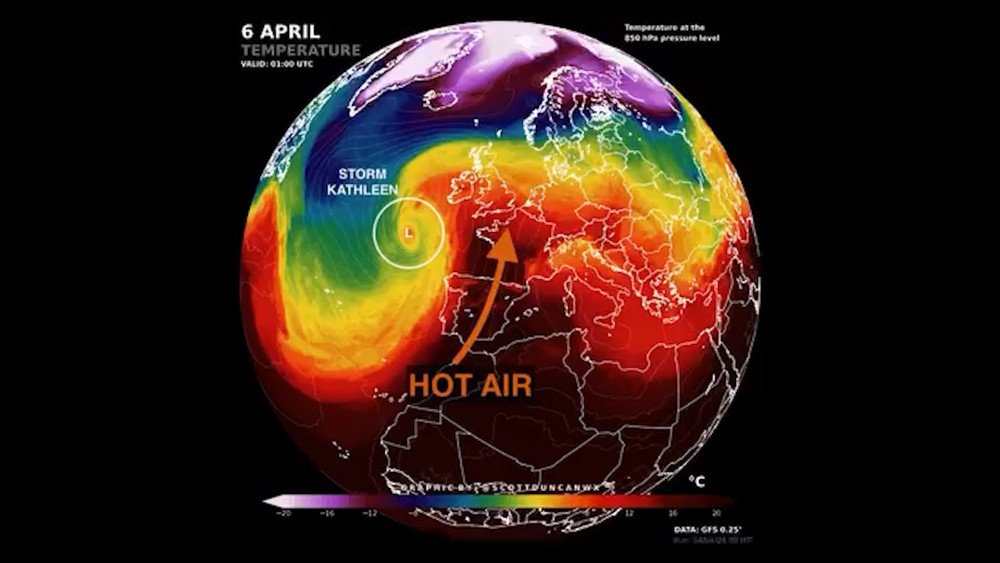
Heat surge in Europe brought by Storm Kathleen
On April 5th, storm Kathleen in the United Kingdom and Ireland halted airport operations and disrupted rail and ferry services. Wind speeds exceeded 31 m/s (69 mph).
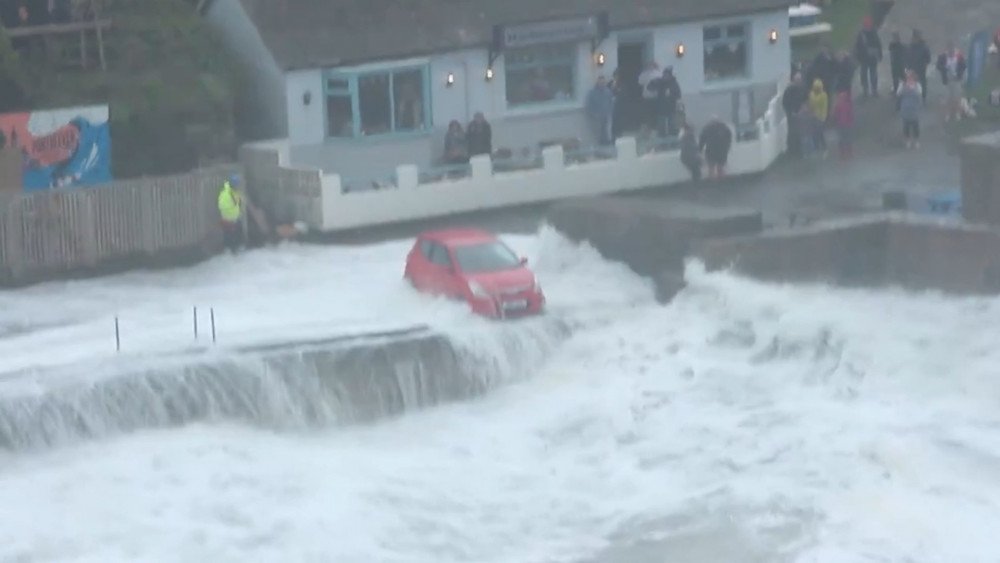
Aftermath of Storm Kathleen, UK
In Ireland, the bad weather led to power outages across the country, leaving about 34,000 homes, farms, and businesses without electricity.
In southern England, Storm Pierrick caused one of the highest tides of the year. Coastal areas were devastated by giant waves and debris.
In West Sussex County, the River Arun burst its banks. Hundreds of people were evacuated urgently.
It is important to note that strong storms are rare in Great Britain at this time of year: since 2015, there has been only one named Storm Hannah in April 2019.
And this year,
within 3 days, the UK has been hit by two powerful storms in a row.
On April 8th, Storm Pierrick also struck northwest France.
In Normandy, it brought winds of 120 km/h and high waves, disrupting transportation in some parts of the region.
In the city of Rouen, the water level in the River Seine reached almost record levels and
rose 40 cm above the quay level.
In the Brittany region on April 9th, huge waves caused by the storm breached a dam in the coastal town of Saint-Malo, flooding the streets.

Huge waves caused by Storm Kathleen in Brittany, France
Giant waves several meters high crashed into houses, surpassing even the height of some buildings.
On the same day, during a powerful tide in the English Channel, 2 fishermen drowned. In Brest, the department of Finistère, parks, squares, sports grounds, and other open spaces were temporarily closed to visitors.
On April 8th, almost 25,000 lightning strikes were recorded across France in just 6 hours. During the peak of thunderstorm activity, residents observed
114 lightning strikes per minute.
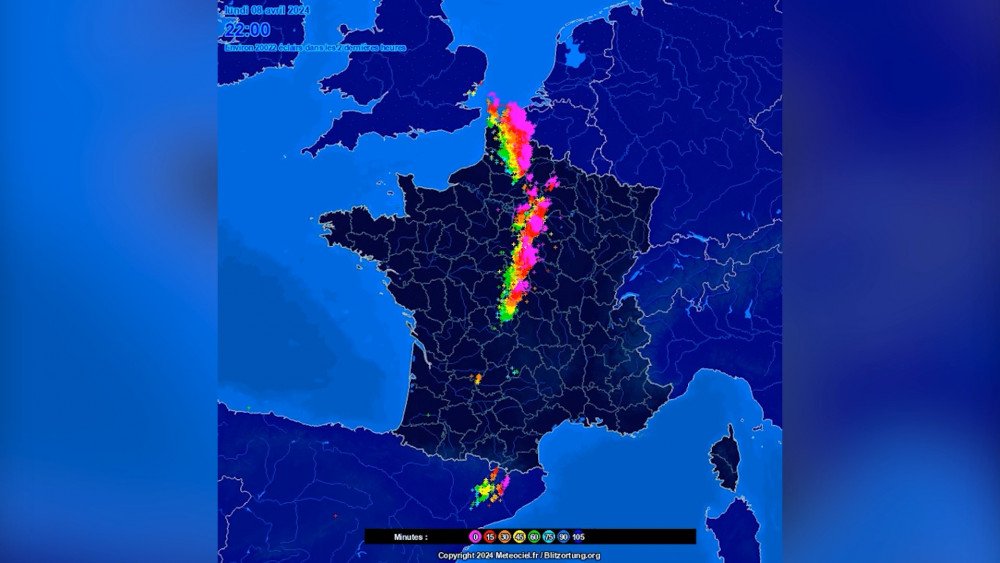
Anomalous thunderstorm activity on April 8th, 2024, France
For many, it is obvious that something is wrong with our planet. Hundreds of temperature records are being registered daily. The number of abnormal storms and floods has no parallel in the historical records. Hundreds of thousands of people suffer from the consequences of climate disasters every week.
Scientists have every reason to believe that at the current pace of events, climate problems will escalate exponentially, and in the next
10-12 years,
we will face the risk of our planet becoming lifeless like Mars.
These forecasts are grim, but
there is still a chance to change this scenario.
To answer the questions of how to prevent a global catastrophe and what each of us can do, we recommend reviewing the materials of the forum
“Global Crisis. The Responsibility.”
You can find the video version of this article
here:
Leave a comment